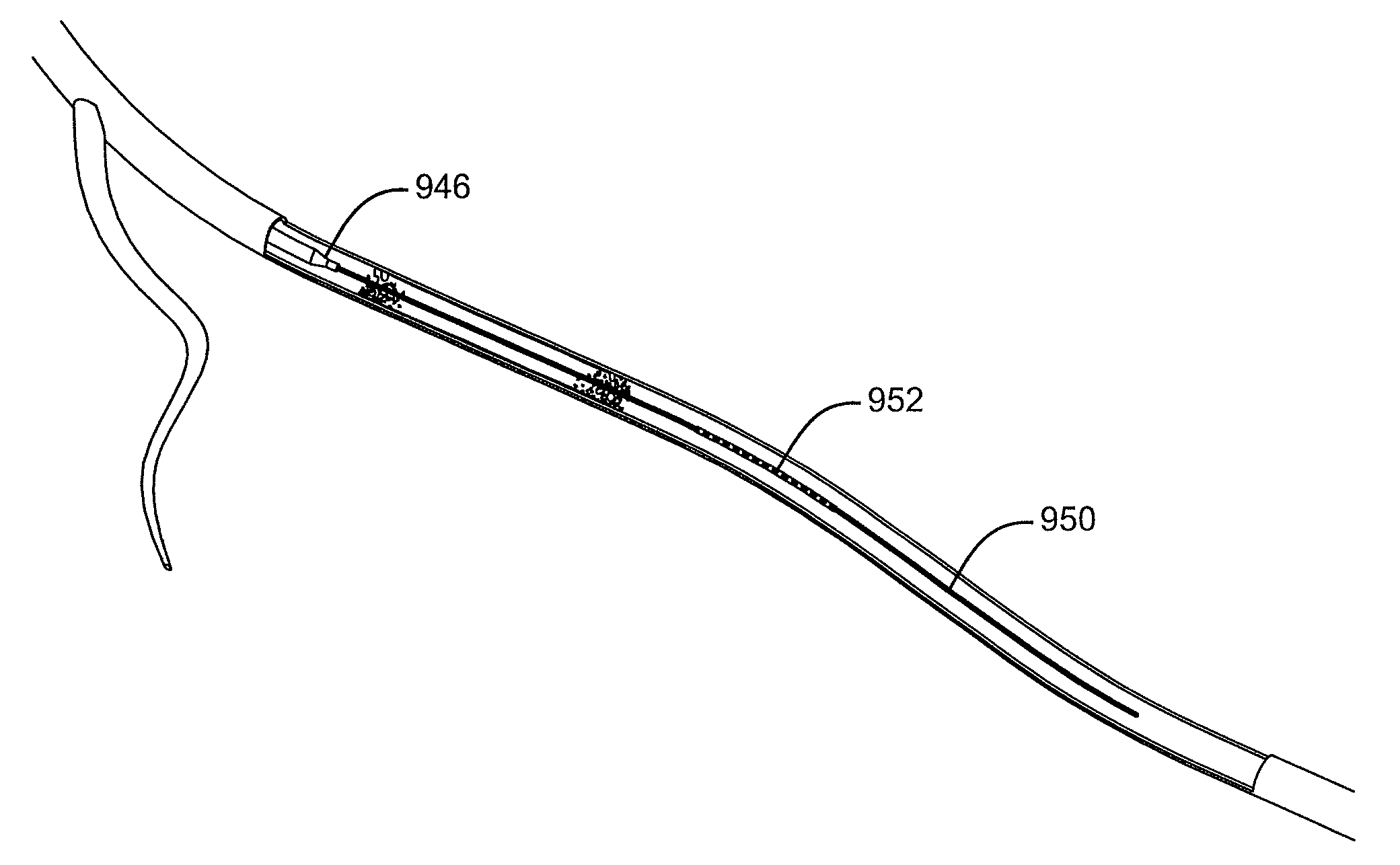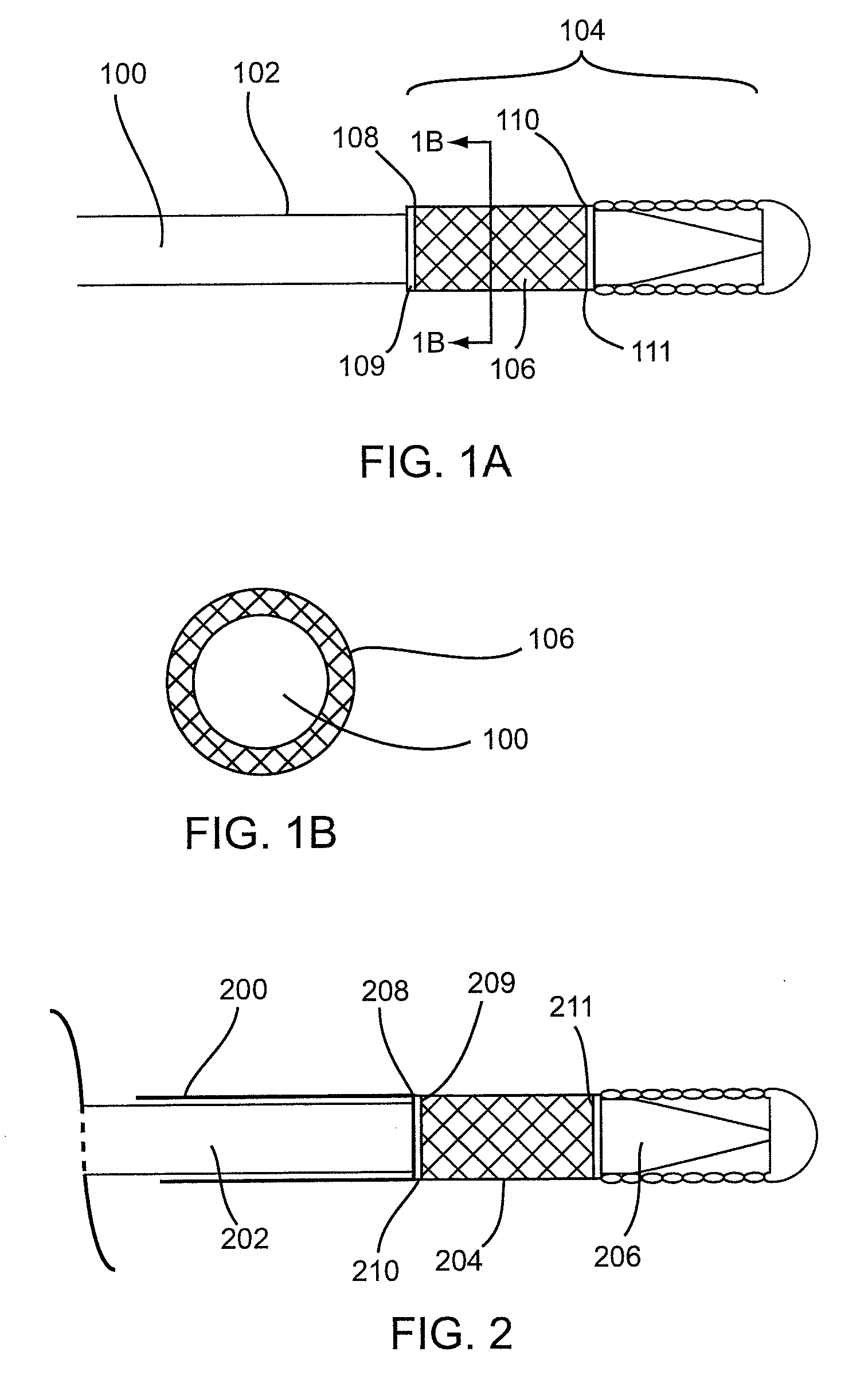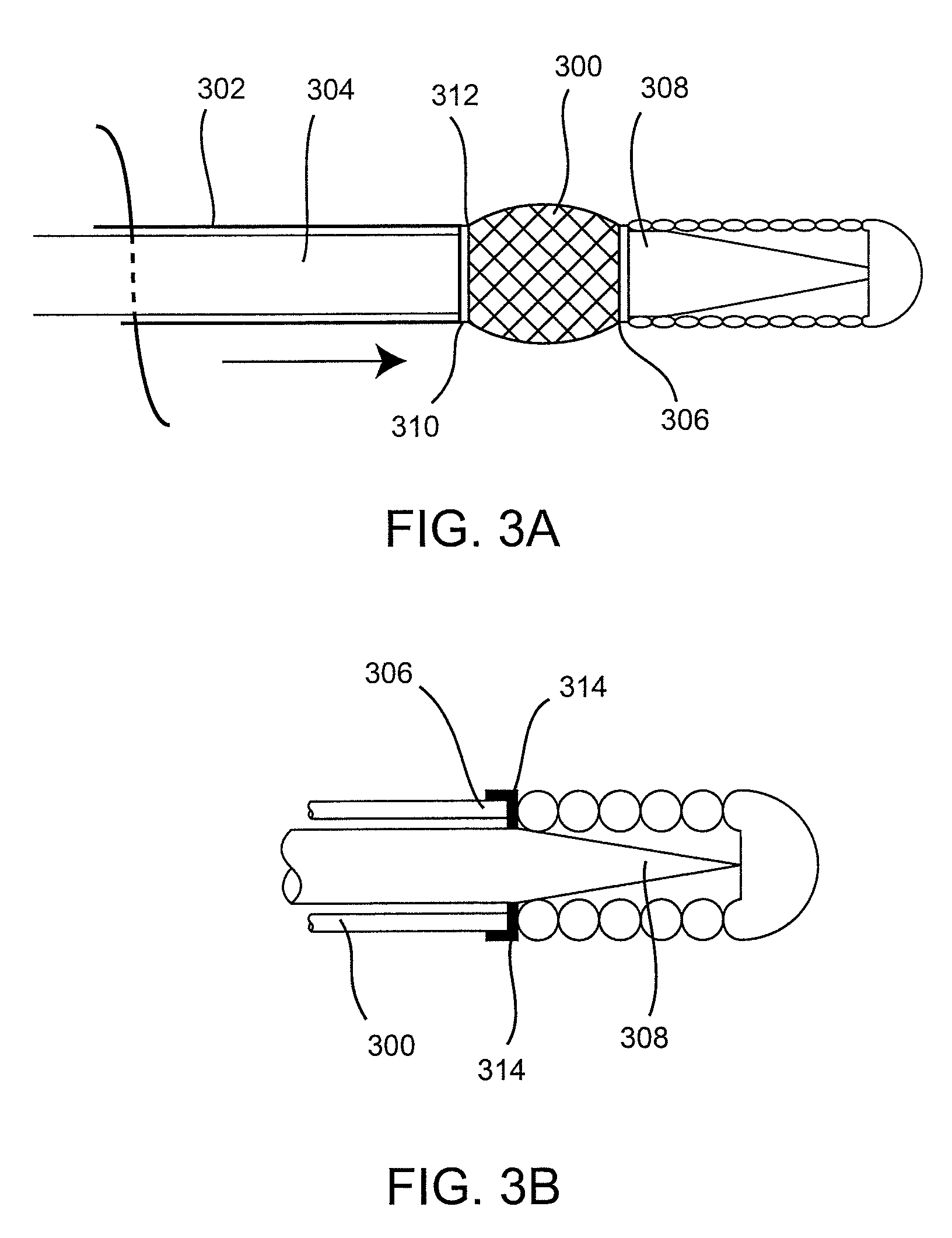Implant delivery technologies
a technology of implanted stents and delivery systems, applied in the field of medical devices and methods, can solve the problems of inflexible stent delivery systems, over-the-guidewire and/or sheathed self-expansion stent deployment systems, and inability to accurately deploy them,
- Summary
- Abstract
- Description
- Claims
- Application Information
AI Technical Summary
Benefits of technology
Problems solved by technology
Method used
Image
Examples
Embodiment Construction
[0042]Described here are devices, systems, and methods for delivering implants into both open and solid regions of the body. The term “region” as used herein refers to luminal structures as well as solid organs and solid tissues of the body, whether in their diseased or nondiseased state. Examples of luminal structures include, but are not limited to, blood vessels, arteriovenous malformations, aneurysms, arteriovenous fistulas, cardiac chambers, ducts such as bile ducts and mammary ducts, fallopian tubes, ureters, large and small airways, and hollow organs, e.g., stomach, intestines, and bladder. Solid organs or tissues include, but are not limited to, skin, muscle, fat, brain, liver, kidneys, spleen, and benign and malignant tumors.
[0043]The device assembly generally includes an elongate, perhaps solid delivery guide, an implant, and one or more implant release mechanisms. Guidewire-less systems are used to deliver the one or more implants. By “guidewire-less” it is meant that the...
PUM
 Login to View More
Login to View More Abstract
Description
Claims
Application Information
 Login to View More
Login to View More - R&D
- Intellectual Property
- Life Sciences
- Materials
- Tech Scout
- Unparalleled Data Quality
- Higher Quality Content
- 60% Fewer Hallucinations
Browse by: Latest US Patents, China's latest patents, Technical Efficacy Thesaurus, Application Domain, Technology Topic, Popular Technical Reports.
© 2025 PatSnap. All rights reserved.Legal|Privacy policy|Modern Slavery Act Transparency Statement|Sitemap|About US| Contact US: help@patsnap.com



